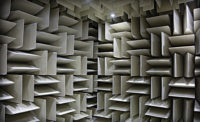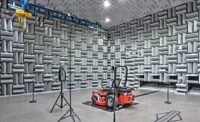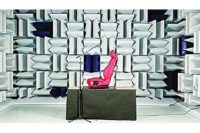Whether or not Earth is the only planet able to support life is debatable. What is undeniable, however, is that the planets of our solar system are not the only things that orbit the sun.
Comets, dwarf planets and asteroids also orbit the sun. In September 2016, as part of its OSIRIS-REx mission, NASA will send a spacecraft to extract a sample from one of these asteroids—called 101995 Bennu—and return it to Earth.
Scientists at NASA believe studying the asteroid sample will increase knowledge of our solar system and the origin of life. Equally important, there’s a high probability (1,800-to-1) of Bennu hitting the Earth late in the 22nd century. Studying the asteroid’s physical and chemical makeup will help future scientists develop an impact-mitigation strategy.
The OSIRIS-REx spacecraft payload will include navigation, communication and scientific instruments, such as the thermal emission spectrometer (OTES). This instrument is a modified version of the miniature infrared spectrometers carried on the Mars exploration rovers Spirit and Opportunity. By analyzing long-wavelength infrared light emitted from the asteroid, OTES will be able to map the minerals on the asteroid’s surface and help mission scientists determine where to collect the sample.
Assembly of the spectrometer was done at Arizona State University’s School of Earth and Space Exploration, and testing is ongoing there. One test involves placing OTES in a custom thermal vacuum chamber that reproduces the vibrations of a rocket launch and the extreme cold temperatures of space.
Made by LACO Technologies Inc., the cylindrical chamber is 5 feet in diameter and 8 feet long. It features a cryogenic pump and internal shrouds that are cooled with liquid nitrogen. The chamber produces pressures as low as 5 x 10-7 Torr and temperatures as low as -192 C, depending on how much liquid nitrogen is run through the shrouds.
A vibration-isolated platen with drilled and tapped holes allows researchers to mount the OTES for testing. The chamber’s controller allows manual or fully automatic operation, including pump downs.
After launching in September 2016, the OSIRIS-REx spacecraft will rendezvous with Bennu in November 2019. OTES will spend up to 15 months surveying Bennu’s mineralogy, during which three visible-light cameras and a laser altimeter will draw a complete picture of the asteroid. Once mission scientists select a target area, the spacecraft will approach Bennu, touch it briefly and collect at least 2 ounces of dust, soil and rubble from its surface. OSIRIS-REx will then fly past Earth and release the encapsulated sample so it lands at the military test range in Utah on Sept. 24, 2023. The spacecraft may go on to survey other asteroids, but will not be able to collect samples from them.
LACO’s standard thermal vacuum chambers come in cube and cylindrical versions with outer diameters of 1 to 5 feet. They are air or water cooled, and operate in temperatures down to -80 C.
For more information on thermal vacuum systems, call 801-486-1004 or visit www.lacotech.com.





